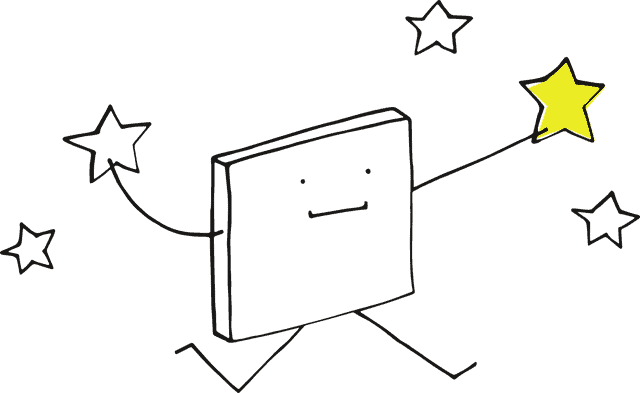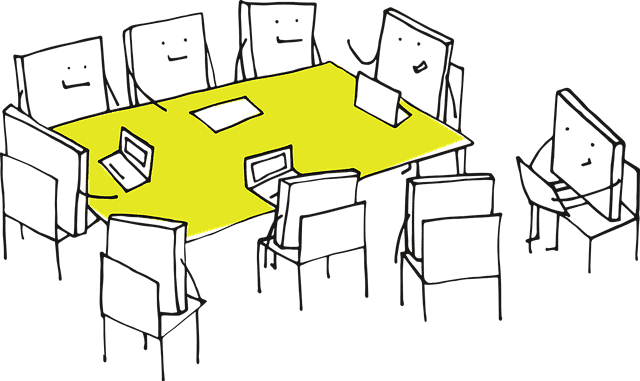
As little children, we all were very creative, but our creative instinct started getting eroded as we grew older. To remain creative, we must try out new things, learn to fail and re-learn from each failure, and always try to take the path that was less travelled. We can learn to be creative in many different forms. Remember that if you want something which you have never had, you must do something that you never did. Creativity is one of the most important traits we possess as human beings – and this trait can lift our personal and professional lives by several notches.
What does it mean to be ‘Creative and Innovative’?
We can understand creativity as the ability to create, bring into existence, invent into a new form, produce through imaginative skill, or bring into existence something new. Creativity is the capacity to produce novel ideas by fusing, modifying, or repurposing old ones. Every idea is the result of creative thinking, and every product is an idea made real. Why do we want to be creative? The objective is mainly to enhance comfort and convenience or to increase productivity and efficiency. Whatever the objective, thinking is a crucial skill for all successful businesspeople. The celebrated human discoveries are not by chance. It was an abstract thought that originally existed only in the mind of the thinker. Men and women used their creative thinking to produce tangible results.
Creativity involves many people from different disciplines working effectively together to solve a great many problems.
It requires talented people to work effectively with one another. That requires respect and trust, both of which must be acquired over time. It cannot be mandated by managers. What we can do is create an environment that fosters respectful and trusted interactions that encourages everyone to express their talents. If we do that well, the outcome will be a thriving community where talented individuals are devoted to one another and their shared work.
The definition of innovation is the addition of something new to an established process or product. The successful application of novel concepts is innovation. All invention starts with original thought. Innovation is the result of creativity. The implementation of creative inspiration is innovation.
Joseph Schumpeter, a political economist, believes that the concept of innovation to create a new commercial product or service is the crucial force in creating new demand and thus new wealth. Innovation creates new demand. Who brings it to the market? None other than entrepreneurs! This revolutionizes the existing markets and creates new ones, which will in turn be disrupted by even newer products or services.
No doubt, the current economic environment is a volatile and violent one. The new environment demands renewed dynamism of approach and only a few organizations can manage the changes inherent in the new environment. Entrepreneurs must keep their organisation lean, young, flexible, and eager for new things to continuously delight the customers, which is the purpose of every business.
How to Nurture Creativity in Organizational Teams?
Having understood the concept and importance of creativity and innovation, let us now explore how we can inculcate the spirit of creativity and innovation in our corporate teams – particularly in the first-generation entrepreneurial endeavours/projects.
Creativity is very important to organizations and to organizational teams that want to solve new problems, fix current ones and be innovative in their industry. Look behind any creative success story and you’ll usually find a great team, a group of passionate people who raised each other’s game.
Here are a few suggestions to help you boost the effectiveness of your team and to inculcate the spirit of creativity among team members:

Use the power of brainstorming
Encourage your employees to brainstorm to generate new ideas. You can brainstorm effectively by taking breaks and removing yourself from the office.

Create diverse teams
Assemble a group of employees who don’t usually collaborate, who have a different set of strengths and weaknesses and who come from different backgrounds.

Reward great ideas
Let your team vote on the best ideas that come out of your brainstorming sessions. You can even give the winner a prize as an incentive for employees to put more thought into their ideas.

Give them big open spaces
Create an open and spacious environment so your team is relaxed by removing as much clutter as possible. Cubicles won’t create a collaborative environment, so try and avoid those if possible.

Make sure your top management supports creativity
Your employees will take risks if they know that you support them. If they know their ideas won’t be considered, then they won’t try to come up with them and no change will take place. Don’t penalize employees for taking risks and thinking outside of the box – embrace it!

The presence of others can boost performance
One of the earliest findings in social psychology was the “social facilitation effect” – the way the mere presence of other people engaged in the same task as us can boost our motivation.
What are some features of successful, creative teams?

A familiar team has benefits like a home stadium.
Everyone knows that sports teams enjoy an advantage when competing in their home stadium’s familiar surroundings. Consider a 2006 Harvard study that showed the performance of heart surgeons improved over time when working at their main hospital surrounded by their usual team.
Virtual teams can outperform face-to-face teams
In 2009, a research team led by Frank Siebdrat assessed the performance of 80 software companies worldwide and found that more dispersed teams often outperformed “co-located” teams.
A balance of extroverts and introverts makes for a better team
While extroverts will grab your attention and showcase their abilities, you might need to search a little harder to spot the talented quiet types. But don’t go too far the other way and ignore extroverts — a balance of complementary personalities is often the most effective mix.
Most good teams have one analytic thinker on board
Team members with a big picture thinking style are great for brainstorming and creative problem solving but when it comes to idea execution a study published this year suggests it’s a good idea to have at least one focused, analytic thinker on your team — that is, someone who can focus on the details of your project.
Teams perform better when they include both men and women
In 2012, Credit Suisse published an analysis of nearly 2,400 international companies, finding that those with at least one woman on their boards tended to be the strongest performers. The benefits of having both men and women in the controlling team were especially apparent in tougher operating conditions and were attributed by the report authors to issues such as better team diversity and a balance of leadership skills.
There’s a danger of teams splitting into sub-groups
A study led by psychologist Doris Fay investigated this problem in the UK’s healthcare system. Fay found that diversity was a bonus – multi-disciplinary teams produced better quality innovations than more homogeneous teams – but only if certain processes were in place to help prevent internal splits.
The best teams communicate outside of formal meetings
Researchers at MIT’s Human Dynamics Laboratory have found conversations outside formal meetings are the most important factor contributing to team success. There are simple steps we can take to increase these valuable encounters, including scheduling coffee breaks so that all team members get to chat with each other and planning social events.
I hope this researched article provided you with some practical tips to nurture creativity in your teams. Tell me what features are already present in your workplace or business, and what has scope for growth.
References:
- Campbell, Ed. “How Pixar Fosters Collective Creativity.” Harvard Business Review, Harvard Business Publishing, 25 Feb. 2019, hbr.org/2008/09/how-Pixar-fosters-collective-creativity.
- Akanbi, Sheu-Usman & Iortimbir, Aun. (2015). Creativity and Innovation in Entrepreneurship.
- McGowan, Robert. “Innovation, Creativity, and Entrepreneurship.” Journal of Entrepreneurship & Organization Management, vol. 01, no. 01, 2012.

Wel written article
Well said Sir as always!! After going through your blog, I was reminded of the famous quote “The desire to create is one of the deepest yearnings of the human soul”. Keep writing and sharing with all of us.